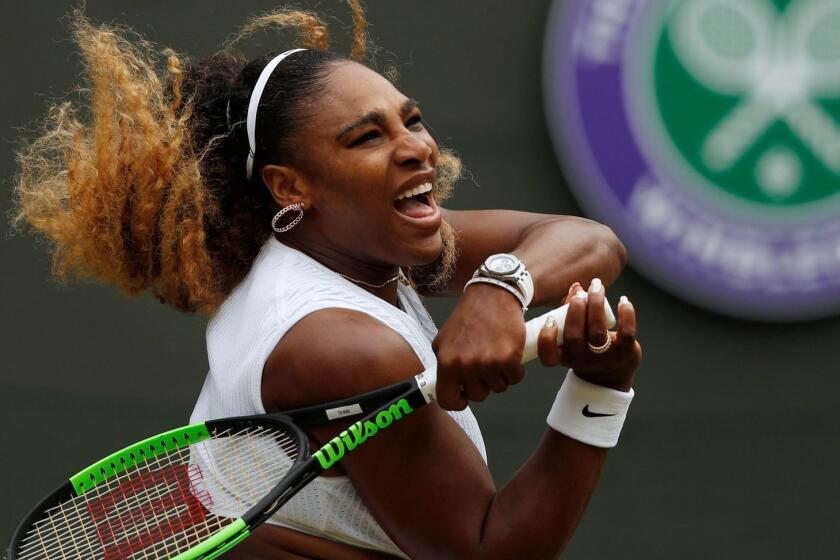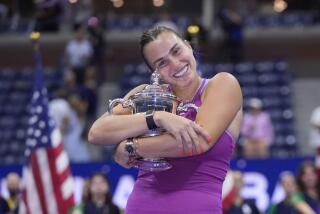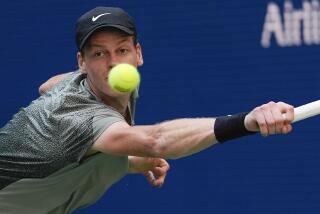Novak Djokovic focused on winning U.S. Open -- and Roger Federer’s Grand Slam record
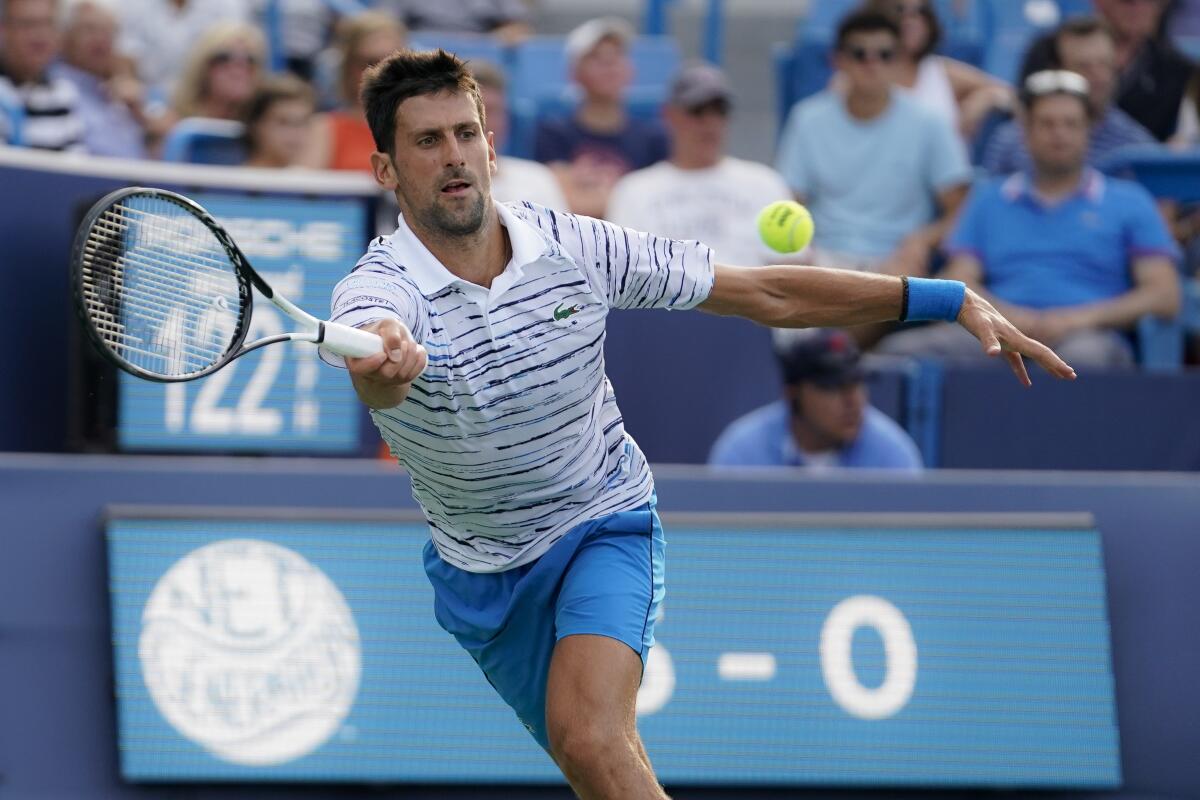
- Share via
NEW YORK — Sentiment will be with Roger Federer and Rafael Nadal at this year’s U.S. Open, as it usually is. They’re adored in a city that’s tough to impress, Federer earning reverence for his balletic genius in winning five of his 20 Grand Slam singles championships here and Nadal winning hearts with his grit and those fearsome topspin forehands while claiming three of his 18 Slams in New York.
Compared to the two senior members of tennis’ Big Three, Novak Djokovic is respected more than universally loved. The world’s No. 1-ranked player isn’t as smooth as Federer or as quirky as the passionate Nadal, but Djokovic is wholeheartedly throwing himself into the madness that happens each year at the Billie Jean King National Tennis Center.
A victory here — where Djokovic beat Juan Martin del Potro in straight sets in last year’s final and has reached at least the semifinals every time he has played starting in 2007 — would be his third Slam title this season and fifth in the last six. Like him or love him, that’s impressive.
“I really do enjoy that loud atmosphere that happens in there, which is quite the opposite of, for example, Wimbledon, except the last finals match,” Djokovic said of playing in noisy Arthur Ashe Stadium, where he will begin pursuit of his 17th Slam title on Monday against Roberto Carballes Baena of Spain.
Serena Williams remains one of the best players in tennis, but she’s running out of time when it comes to breaking Margaret Court’s Grand Slam record.
“And I think you just adjust to it. You adapt to it. You accept it. You embrace it. I do embrace it because I think it’s good for our sport to have various different atmospheres on the center courts of four different slams that are very unique and obviously the biggest events in our sport.”
Djokovic acknowledged he’s focusing on passing Federer’s Slams total. “I am 32 so things are a little bit different than they were 10 years ago, but I still feel young inside and outside,” Djokovic said. “And I still am very motivated to keep going and especially at this stage. I mean, it always has been the case but, especially now, more or less everything is about Grand Slams in terms of how I see tennis and how I approach them because, you know, they matter the most.”
Nadal, 33, had to retire from his U.S. Open semifinal against Del Potro last year because of a knee injury aggravated by playing several long matches but he said his knees feel better now. He will play his first match on Tuesday, against John Millman of Australia.
Nadal is in the opposite half of the draw from Djokovic and Federer but was cautious about whether that will give him an edge. “Let’s see if I am able to do my work for my side,” said Nadal, who routed rising Russian Daniil Medvedev to win the recent Rogers Cup tournament. “I have to win my matches to have an advantage because I only can meet them in the semifinals.”

No. 3 seed Federer hasn’t won the U.S. Open since 2008, the last of his five straight triumphs. He squandered two match points over Djokovic in a five-set loss at this year’s Wimbledon final and has played only one tournament since then, losing to Andrey Rublev in the round of 16 at Cincinnati, but he has a relatively favorable draw. He will open Monday night against qualifier Sumit Nagal of India.
Behind the big three are a jumble of maybes. Among them are Medvedev, who recently cracked the top five in the rankings for the first time; talented but undisciplined Nick Kyrgios; No. 4 seed Dominic Thiem of Austria; Canadian teenager Felix Auger-Aliassime, and 22-year-old Alexander Zverev of Germany, whose rise has been stalled by a dispute with his agent and a coaching change. “It’s the first time in probably a few years where I’m not a favorite in any way at a Grand Slam, and it takes some pressure off,” Zverev said last week. Kevin Anderson of South Africa, the 2017 runner-up, withdrew because of a right knee injury, and Milos Raonic of Canada, who was seeded 21st, withdrew because of a glute injury.
None of the potential contenders is American. That’s nothing new: no American man has won the U.S. Open since Andy Roddick in 2003. The only American men to reach the last 63 Slam finals are Roddick (at the U.S. Open in 2006 and at Wimbledon in 2004, 2005 and 2009) and Andre Agassi (2005 U.S. Open). The highest-seeded American this year is injury-plagued John Isner at 14, followed by No. 26 Taylor Fritz of Palos Verdes.
“I think that certainly would be helpful if we had an American player that was competing with the likes of the top dogs, there’s no question about that,” said John McEnroe, who won seven Grand Slam singles titles and nine Slam doubles championships and is now an ESPN commentator. “We’re in a frustrating period that’s continuing, and hopefully that will change sooner rather than later.”
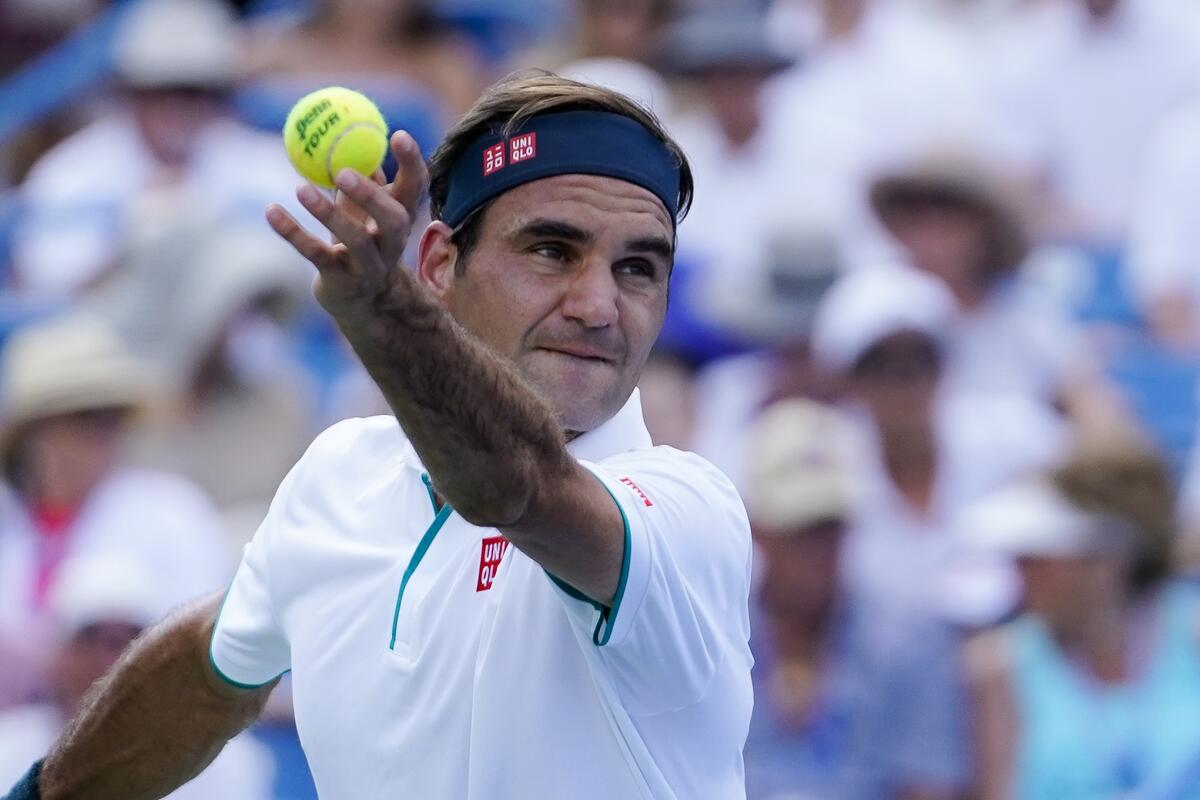
Fans here and those watching on TV will benefit from changes initiated by the U.S. Tennis Assn. to clarify the application of rules. The ugliness and confusion that marred last year’s final between Serena Williams and Naomi Osaka is the reason there’s a new tournament referee, Soeren Friemel, who will provide explanations to broadcasters and other media. It’s also the reason rules will be displayed on video boards in each stadium before each match and an announcement will be made when violations are called against players. In the semifinals and finals an official will take to Twitter to explain the rules. Incidentally, the chair umpire of the Williams-Osaka match, Carolos Ramos, won’t officiate matches involving Serena or Venus Williams this year, though Friemel said Ramos is still considered to work “all high-profile matches.”
In addition, Friemel said the existing one-five-one rule — one minute for the player to come to the pre-match meeting, a five-minute warmup and one minute to start the point — will be enforced. Also, there will be only one bathroom or clothing change break permitted in a women’s best-of-three match, down from two, and two breaks permitted in men’s best-of-five matches.
Let the madness begin, in all its noisy glory.
More to Read
Go beyond the scoreboard
Get the latest on L.A.'s teams in the daily Sports Report newsletter.
You may occasionally receive promotional content from the Los Angeles Times.

